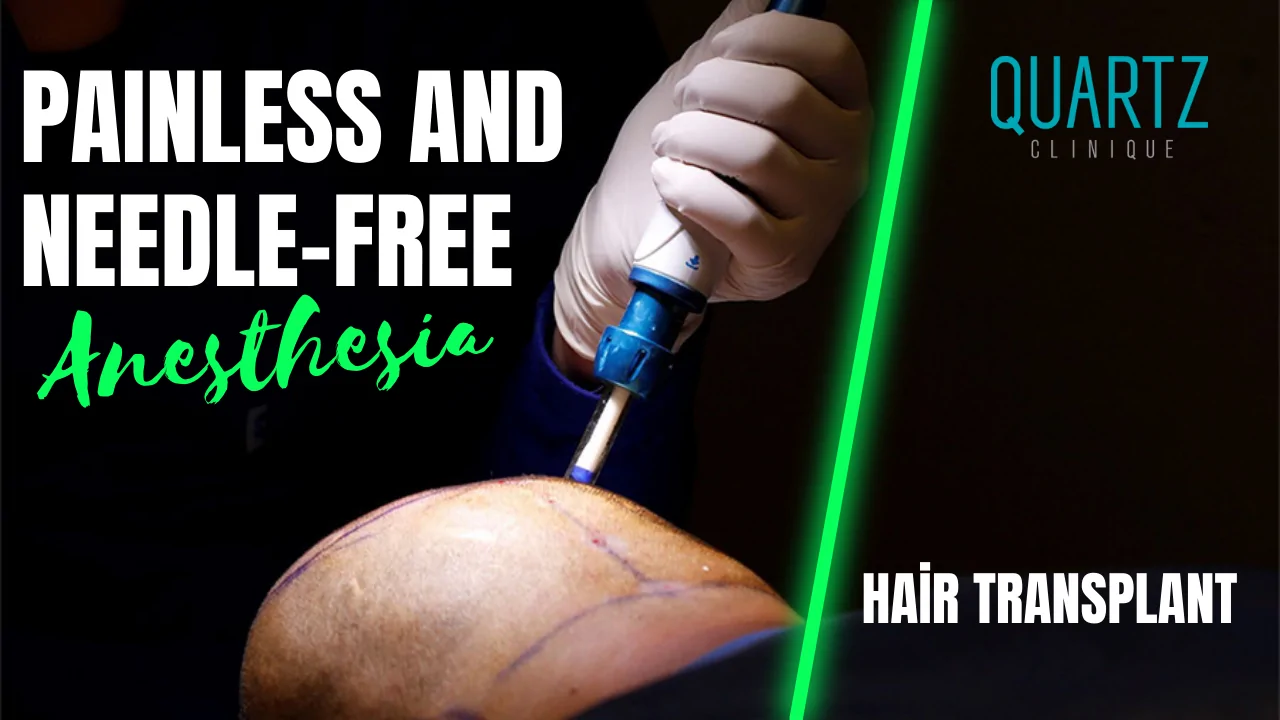Painless and needle-free hair transplant techniques have revolutionized the way patients experience hair restoration surgery.
One of the most common concerns among individuals considering a hair transplant is the fear of pain and needles during anesthesia. Thanks to modern technology, this fear is now a thing of the past.
Hair transplantation remains the most effective and permanent solution for hair loss caused by genetics, hormonal imbalance, trauma, or disease. Today, both men and women can undergo FUE or Sapphire hair transplant comfortably and pain-free with innovative needle-free anesthesia systems.
Is Hair Transplantation Painful?
The fear of pain is one of the main reasons people hesitate to undergo hair transplantation. However, with local anesthesia and sedation, the procedure is virtually pain-free.
During the operation, only the scalp is numbed, ensuring that the patient stays fully conscious and comfortable.
Patients might feel slight pressure or a mild tingling during anesthesia administration, but once numbness sets in, no pain is felt throughout the entire surgery.
Most patients describe the experience as comfortable and surprisingly easy.
What Is a Painless and Needle-Free Hair Transplant?
The needle-free hair transplant method uses high-pressure technology to deliver local anesthetic medication beneath the skin without using traditional needles.
The anesthetic penetrates the tissue through a pressurized spray device, diffusing quickly into the target area and numbing the nerves that transmit pain.
This system is especially beneficial for:
- Patients with needle phobia (trypanophobia)
- Those with low pain tolerance
- Individuals seeking a more comfortable and anxiety-free experience
Even though minor pressure can still be felt, this technique eliminates the sharp sting of needle injections, providing a more relaxed and stress-free start to the procedure.
How Does Needle-Free Anesthesia Work?
During a Sapphire or FUE hair transplant, local anesthesia is applied twice:
- To the donor area (usually the back of the head)
- To the recipient area (where grafts will be implanted)
With the needle-free injector, anesthetic drugs are sprayed under high air pressure.
Once absorbed, the medication blocks pain signals from reaching the nerves, ensuring that the patient remains completely comfortable during graft extraction and implantation.
Some additional tumescent anesthesia may still be required with fine needles to enhance numbness, but the discomfort is greatly reduced compared to traditional methods.
Advantages of Painless and Needle-Free Hair Transplant
The latest innovations in local anesthesia offer many advantages that make hair transplantation safer and more comfortable than ever before.
| Benefit | Description |
|---|---|
| No needle injections | Anesthetic is delivered via air pressure — no sharp needle penetration |
| Less swelling and bruising | No repeated punctures minimize redness and post-anesthesia swelling |
| Lower risk of infection | Skin remains intact, reducing contamination risk |
| Faster and more precise numbing | Larger areas can be anesthetized evenly and quickly |
| Comfort for anxious patients | Ideal for those afraid of needles or sensitive to pain |
Do You Feel Pain During or After a Hair Transplant?
During surgery, no pain is felt once local anesthesia takes effect. The numbing lasts for several hours and is refreshed throughout the procedure as needed.
Patients may only feel minor pressure or stretching sensations from movement but not actual pain.
After the surgery, some mild soreness or tightness may occur once anesthesia wears off. However, your doctor will prescribe pain relievers to keep you comfortable during the first evening.
Most patients report no pain at all by the next morning and don’t require additional medication.
What Happens During a Painless Hair Transplant?
Here’s a simplified overview of what you can expect:
- Preparation & Marking: The doctor designs the new hairline and prepares donor and recipient zones.
- Needle-Free Anesthesia: The anesthetic is applied through air pressure, numbing the scalp.
- Graft Extraction: Hair follicles are harvested painlessly using the FUE method.
- Canal Opening & Implantation: Tiny channels are created with a Sapphire blade for natural direction, and grafts are implanted carefully.
- Post-Op Care: After the operation, the area is cleaned, and the patient receives personalized care instructions.
How to Minimize Pain After Hair Transplant
Even though modern procedures are nearly pain-free, following these aftercare tips ensures optimal comfort and recovery:
💊 Take prescribed painkillers or anti-inflammatory medication on time.
🧴 Keep your scalp clean and moisturized as instructed.
💤 Sleep with your head elevated for the first few nights.
🚫 Avoid smoking and alcohol — they slow healing and can cause swelling.
💧 Stay hydrated and eat a nutrient-rich diet for faster recovery.
Why Choose Quartz Hair Clinic for Painless Hair Transplant?
At Quartz Hair Clinic Istanbul, we combine cutting-edge techniques such as DHI, FUE, and Sapphire hair transplant with needle-free anesthesia systems to provide the most comfortable experience possible.
Our internationally trained surgeons and experienced medical staff ensure natural results with minimal discomfort, even for patients with needle anxiety.
We also offer:
- Sedation options for complete relaxation
- State-of-the-art sterile surgical rooms
- Continuous post-operative support and check-ups
The painless and needle-free hair transplant is transforming patient experiences in modern hair restoration.
Through advanced anesthesia systems, patients can achieve natural, permanent results without pain, fear, or anxiety.
Choosing a skilled and certified medical team is the key to ensuring safety, comfort, and long-term satisfaction.

